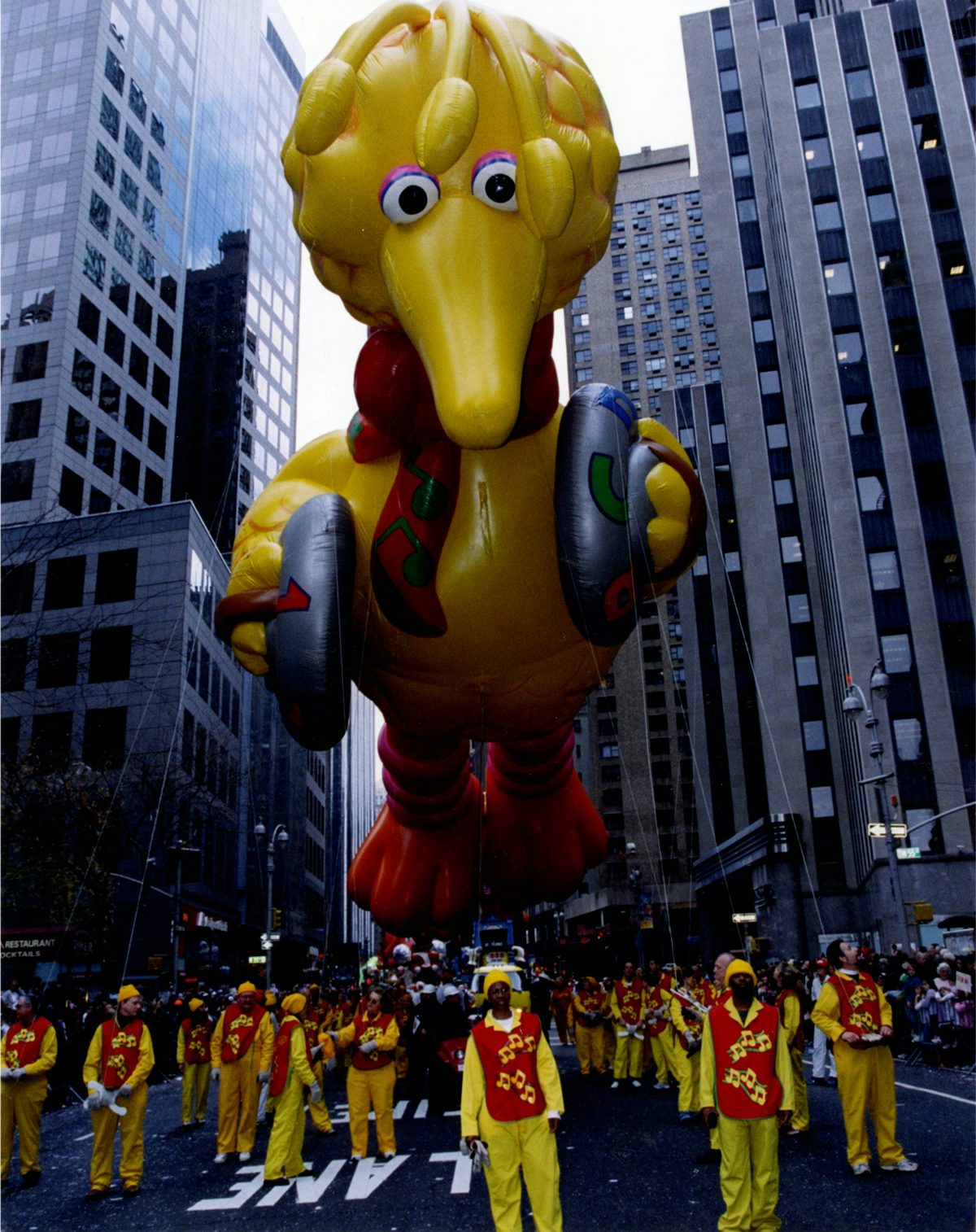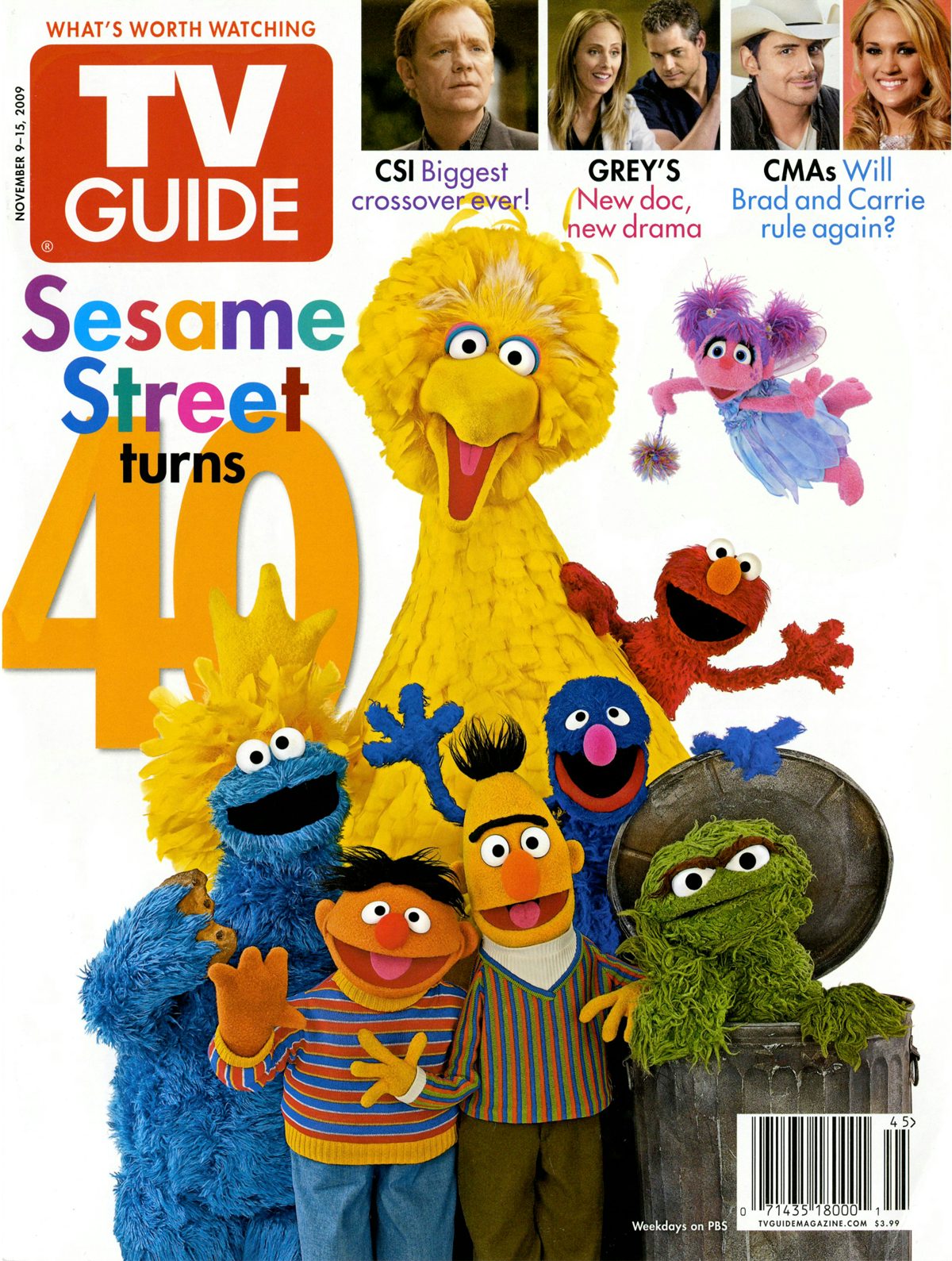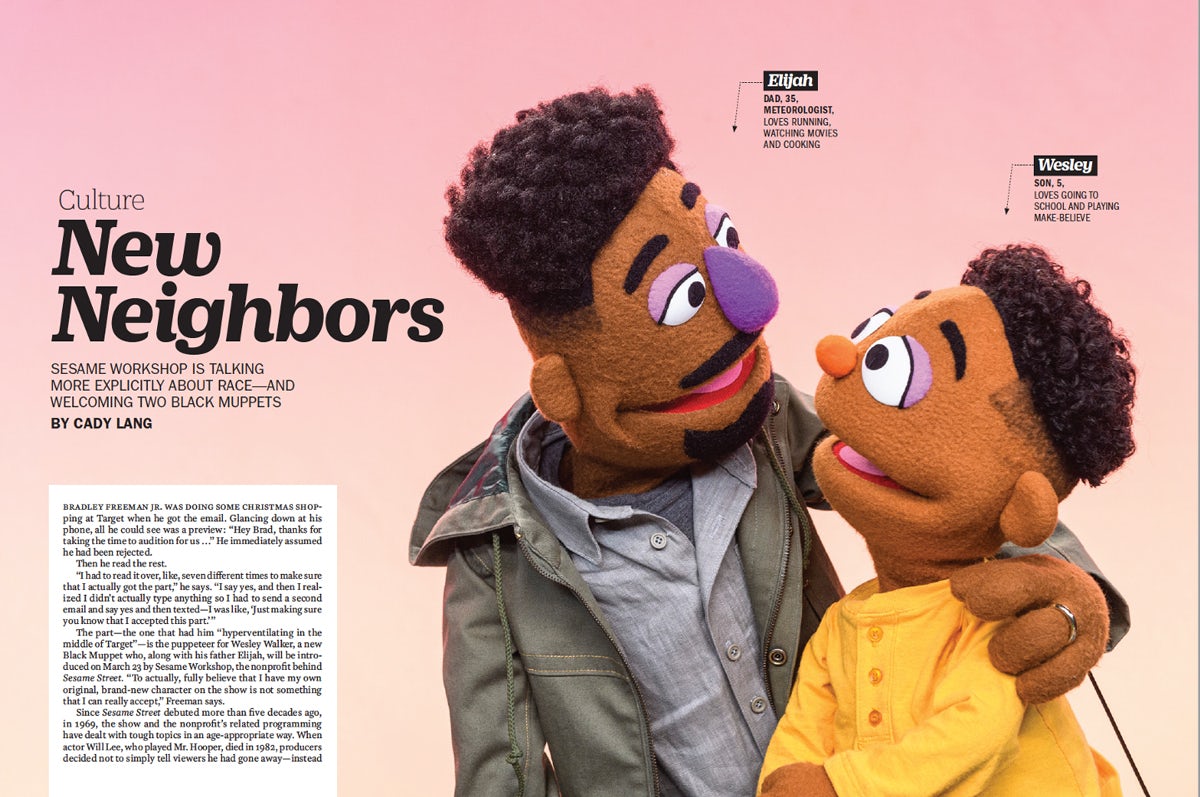The Monthly Interview: Louis Henry Mitchell
Sesame Workshop’s creative director of character design discusses the joy of getting to do his dream job everyday, why story is everything when it comes to creating lovable characters, and how Sesame Street has stood the test of time
Louis Henry Mitchell’s introduction to character design came at the age of just six, when he was watching the Ed Sullivan Show on TV one night and Jim Henson came out on stage with Kermit the Frog still attached to his hand. “He’d never done that before as far as I saw, so it just blew my mind that it was a man doing it the whole time. It was him that triggered this creative spark that ignited in me and became this raging flame, and it’s been working ever since,” he says.
As the almost godlike creator, inventor and father figure of the Muppets universe, Henson’s work has been beloved by children around the world for half a century now. Arguably his most iconic show, Sesame Street, launched in 1969 against the backdrop of the Civil Rights movement and the War on Poverty, using television as a medium to help prepare disadvantaged children for school. Sesame Workshop – where Mitchell has worked on and off for the last three decades – is the non-profit organisation behind the show, as well as a range of other educational children’s series, social impact initiatives, school programmes, and research and innovation projects.
While Mitchell knew that he wanted to play a part in Henson’s world from the first night he saw the man behind the Muppets, his first proper break in the creative industries was thanks to his other creative hero, Neal Adams, the artist behind iconic comics such as the Green Lantern. “I was 11 years old when I found that comic book and I couldn’t believe my eyes how detailed it was. I felt like I was watching a movie, rather than looking at a comic book,” he recalls.

“The way comic books are made, one person writes it, somebody else does the pencil drawings, somebody inks it, and somebody else letters it, so I joked with my friends that one day Neal Adams was going to ink my pencil drawings,” says Mitchell. As it turned out, his prophetic joke would end up coming true when, aged 17, he was introduced to Adams at a party by another comic book artist he’d been doing some work for. After asking to see his sketchpads, Adams hired him on the spot.
Mitchell first started freelancing for Sesame Street as a character designer in 1990 but sadly never got to meet Henson in person, as he died suddenly just a couple of weeks after he’d joined the show. “That’s why I’m grateful for what I get to do at Sesame, carrying on his work,” he says. “Some people don’t like when I say that, but I’m not thinking that without me his work won’t be carried on. I get to be a piece of what he did, and he’s the one that lit that up in me. So I’m grateful that I get to design the new Muppets at Sesame Street and all these other projects.”
After a decade of freelancing, the designer joined Sesame Workshop full-time in 2000. Since then, he’s worked on an array of different projects – from designing the Macy’s Thanksgiving Day Parade balloons and floats to directing Sesame Street photo shoots. Now creative director of character design, he’s responsible for directing and overseeing most aspects of character art for the non-profit.
Alongside his day job, he continues to be the exclusive Sesame Street Muppet designer for new characters. In recent years, this has included Korean-American Muppet Ji-Young, who launched to coincide with an initiative against anti-Asian violence, and African-American Muppets Elijah and Wesley, the latter of which was based on his own son. “George Floyd had just been murdered and children were seeing and hearing about it on the news, so Sesame Street wanted to provide some kind of material to help children navigate that the best they could,” he explains. “Elmo and little Wesley, they were talking about melanin and how the colour you see on the leaves is the same kind of chemical that makes our skin colours and things like that. It was really a beautiful message.”

While Mitchell is determined to continue Henson’s mission to address some of society’s most pressing issues through lovable characters like Big Bird and Cookie Monster (the designer’s all-time favourite Muppet), he notes that the newer designs have ended up becoming much more humanlike over the years. “Jim Henson never wanted to do that, that’s why many of the characters are fanciful colours. But what we’re saying now is different from what we were saying back in the day. It’s no longer about ABCs or 123s, it’s about life and even death. Some of these initiatives are so potent that if they used a real human it would be too heavy, so a humanised puppet is a nice buffer between a harsh story and the children,” he says.
As for the project he’s personally most proud of, the designer’s face lights up when he talks about four-year-old Julia – the first Sesame Street Muppet on the autism spectrum – who joined the show in 2017. When the brief came up, the producers had no idea that Mitchell was already volunteering with kids on the spectrum, and he didn’t know that they’d been working on an autism initiative for almost a decade at that point. “I said, ‘Now I know why this volunteer opportunity came up’. It was preparing me, because I wouldn’t have touched the project if I didn’t have the experience.”
Taking almost a year to bring to life, Julia is a prime example of the amount of careful consideration that goes into creating one of Sesame Street’s iconic characters. Subtle details such as human-textured hair, for instance, are designed to instantly make her more relatable to young viewers, while her diamond shaped nose is a nod to the fact that she’s “a diamond in the rough”, says Mitchell.
What the success of a character ultimately comes down to though is what you’re trying to say first and foremost, rather than the design itself. “The greatest character designers are writers,” he says. “You do not start to design a character by picking up a pencil or turning on your computer. You listen to the reasons why you need to say anything, and then after you have a reason and the storyline, you can start creating a character. Is it going to be an animated character? Is it going to be a puppet? Is it going to be a human? All of that is dictated or influenced by the whole initiative from the beginning.”

Like any entertainment brand hoping to cut through in a fragmented media landscape, Sesame Workshop has been through some big changes in recent years. While its 2023 rebrand by New York agency Trollbäck+Company acknowledged its biggest export with a knowing nod to the Sesame Street sign in the logo, beyond this the idea was to celebrate the diversity of its philanthropic work today. The non-profit also has a big presence on social and has introduced new formats such as the Not-Too-Late Show with Elmo, which riffs on the American late night TV show concept with celeb interviews, jokes and bedtime songs.
While entertainment value has clearly been vital to Sesame Street’s enduring success over the years, Mitchell believes its ongoing mission to educate children is ultimately what’s enabled it to become one of the longest-running shows in TV history. “People view it as a family heirloom. There are grandparents that watched the show back when it first started and they passed it on to their children and then their children, so it’s like four generations enjoying Sesame Street,” he says.
@sesamestreet For what it’s worth, you were warm and delicious. #Cookie #CookieMonster #SesameStreet
And while children’s entertainment has become increasingly sophisticated over the years, the designer is convinced that there will always be a place for puppets along with other more traditional crafts like stop-motion. “Even when Disney creates a new Mickey Mouse character, they have to go back to reference the original animated character,” he says.
“Even though the Sesame Street Muppets are fantastical characters, they started in the real world so people already relate to them actually being there. The biggest challenge now is to try not to get caught up too much in the landscape of what’s happening out there and to really stand out. Sesame Street was started as an experiment and, 55 years later, we are still an experiment.”

Louis Henry Mitchell spoke at the recent Birmingham Design Festival; sesameworkshop.org




